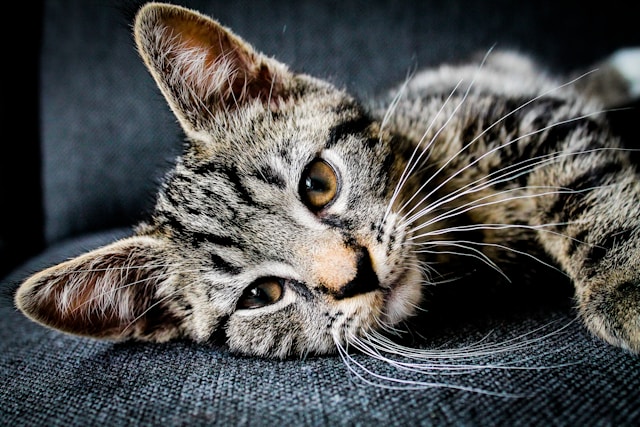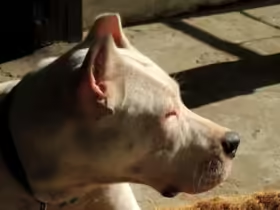If you’ve ever noticed your cat kneading a soft surface with their paws, you might have wondered why they do this seemingly peculiar behavior. Kneading is a common and fascinating feline action that has intrigued cat owners and researchers alike. This blog delves into the science behind why cats knead, exploring its evolutionary roots, its role in feline development, and what it signifies in your cat’s behavior.
Understanding Cat Kneading
What Is Kneading?
Kneading is a behavior in which a cat rhythmically pushes in and out with their front paws against a soft surface, such as a blanket, your lap, or a cushion. This action resembles the motion of kneading dough, which is where the behavior gets its name.
When Do Cats Knead?
Cats may knead in various situations, including:
- When Relaxed: Many cats knead when they are calm, content, or settling down for a nap.
- During Affection: Kneading can occur when your cat is expressing affection, often accompanied by purring or nuzzling.
- In Response to Stress: Some cats knead when they are anxious or stressed as a self-soothing behavior.
The Science Behind Cat Kneading
Understanding why cats knead involves looking at both instinctual and learned behaviors:
1. Evolutionary and Instinctual Roots
Kneading behavior is believed to have deep evolutionary and instinctual origins:
1.1 Kitten Behavior
- Nursing Reflex: Kittens knead their mother’s belly while nursing to stimulate milk flow. This instinctual action is rooted in their early developmental stages.
- Comfort and Security: Kneading while nursing provides kittens with a sense of comfort and security, reinforcing the bond with their mother.
1.2 Marking Territory
- Scent Marking: Cats have scent glands in their paws that release pheromones when they knead. By kneading surfaces, they may mark their territory with their scent.
- Establishing Territory: Kneading can be a way for cats to claim their space or show ownership of a particular area.
2. Psychological and Behavioral Factors
Kneading also has psychological and behavioral aspects:
2.1 Comfort and Contentment
- Self-Soothing: Kneading can be a form of self-soothing for cats, similar to how humans might fidget with their hands or comfort items.
- Expression of Contentment: Cats often knead when they are feeling particularly relaxed and content, such as while lounging or receiving affection.
2.2 Bonding Behavior
- Affectionate Behavior: Kneading on a human or another pet can be a sign of affection and bonding. It’s a way for cats to express their trust and love.
- Social Connection: Kneading can strengthen social bonds between cats and their owners, reinforcing positive interactions.
3. Physical and Health Aspects
There are also physical aspects to consider:
3.1 Exercise and Stretching
- Paw Exercise: Kneading involves the muscles in a cat’s paws and legs, providing a form of exercise and stretching.
- Maintaining Flexibility: Regular kneading can help cats maintain flexibility and strength in their limbs.
3.2 Stress Relief
- Stress Reduction: Kneading can act as a stress-relief mechanism, helping cats manage anxiety or discomfort.
- Calming Effect: The rhythmic motion of kneading can have a calming effect on cats, providing a sense of security.
Why Kneading Might Be Annoying (and How to Manage It)
While kneading is generally harmless, it can sometimes be problematic for cat owners:
1. Managing Kneading Behavior
1.1 Provide Alternatives
- Soft Surfaces: Provide your cat with designated soft surfaces or beds where they are encouraged to knead. This can help redirect their behavior away from areas you want to keep free of kneading.
1.2 Positive Reinforcement
- Reward Behavior: Reinforce positive behaviors by offering treats or praise when your cat kneads on appropriate surfaces.
2. Addressing Issues with Kneading
2.1 Excessive Kneading
- Monitor Frequency: If kneading becomes excessive or disruptive, consult your vet or a behavioral specialist to rule out underlying issues.
2.2 Potential for Injury
- Nail Trimming: Keep your cat’s nails trimmed to minimize potential damage to furniture or skin during kneading.
Understanding Individual Cat Behavior
Each cat may have unique reasons for their kneading behavior based on their personality and experiences:
1. Kittenhood and Early Life
- Early Experiences: Cats that had positive early experiences with kneading may continue this behavior into adulthood as a comforting ritual.
- Socialization: Cats raised with other cats or in a nurturing environment may exhibit more pronounced kneading behaviors.
2. Breed-Specific Traits
- Breed Characteristics: Some cat breeds may be more prone to kneading due to their unique temperament or behavior traits.
Observing and Appreciating Kneading
While kneading is a natural behavior, observing and appreciating it can enhance your bond with your cat:
1. Observe Your Cat’s Kneading Patterns
- Identify Triggers: Pay attention to when and where your cat kneads to understand their preferences and triggers.
- Enjoy the Moment: View kneading as a sign of your cat’s contentment and affection, and use it as an opportunity to bond.
2. Encourage Positive Interactions
- Positive Reinforcement: Encourage and reward positive interactions with your cat during kneading sessions.
- Create a Comfortable Space: Provide a comfortable environment that supports your cat’s kneading behavior.
Conclusion
Kneading is a fascinating and multifaceted behavior rooted in your cat’s instincts and psychology. From its evolutionary origins as a nursing reflex to its role in expressing contentment and marking territory, kneading offers valuable insights into your cat’s well-being and emotional state. By understanding the science behind this behavior, you can better appreciate its significance and manage it in a way that enhances your cat’s comfort and your own enjoyment. Embrace your cat’s kneading as a natural and endearing aspect of their behavior, and enjoy the deeper connection it fosters between you and your feline companion.











Leave a Reply